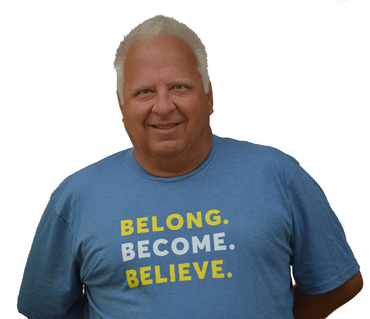Growing up, I tried playing a lot of team sports. Frankly, all my friends were better. It was 1973, I was 15 years old―and I felt I needed an individual sport to excel, one where I could finally be the better player.
At the time, “Ping Pong Diplomacy” was a global phenomenon, especially between the U.S. and China. But table tennis was also a local sensation, right here in South Park, Pennsylvania. The Seemiller brothers, Danny, Ricky, and Randy―game changers in competitive table tennis―played at the South Park Tennis Table Club. In fact, Danny, who was ranked #1 in the U.S. when I joined the Club, eventually turned pro (turning down an opportunity to play with the Pittsburgh Pirates) and went on to become the U.S. Olympic Head Coach.
There were 11 tables at the Club; I started at the bottom and worked my way to the top. Within two years, I was ranked among the Top 50 junior players in the U.S., and by 1979, I became the Club Champion. Forty-one years later (in part, thanks to Covid), I was also the Club Champion in 2020.
Starting college, I caught the attention of Connie and Brad Bayles, big names in Pittsburgh tennis, as they built courts all over the city. They hired me to help with court construction and, eventually, as a tennis instructor for beginners at the YMCA. Taking me under their wings, they helped me get a tennis scholarship at New Mexico State, where I played “real tennis” for the first time. After running in the desert every morning, I got whooped on the court in the afternoon. The players were much better and, as a result, I got a lot better, too. Returning home, I graduated from Robert Morris University, and started teaching tennis at South Park. Once again, Brad Bayles pushed me further into my career, urging me to “get certified!”
In the early 1980s, I headed to Hilton Head to obtain certification from Dennis Van der Meer, the legendary founder of the Standard Method of teaching tennis and PTR certification. People would travel far and wide to participate in his classes, and pros like Billie Jean King would profit from his coaching. I received the highest certification, mastering written, on-court, and target tests, as well as teaching both private and group lessons. One of my happiest memories is playing tennis all night long with fellow participants from across the globe after receiving our teaching certifications.
I continued teaching tennis at South Park and then, at a local club, finally joining USCTDP in 1988. Couldn’t ask for a better crew, better opportunity, better life. That’s why I tell my students: It’s out there, just don’t give up. Persistence wins the day.
KNOW YOUR PRO
Favorite Female Pro: Ali Riske
Ali grew up on our courts, so we got to know her whole family, including dad, mom, sister, and brother. The Riskes were dedicated and hard-working people. In fact, Ali was the “best ball picker-upper ever,” wanting to get back to hitting as soon as possible. When Ali was part of our program, she was the #1 Junior in the country, but you’d never know it, as she remained humble and kind. While Ali Riske is a great tennis player, she’s an even nicer person.
Favorite Male Pro: Bjorn Borg and Rafael Nadal
These guys were never troublemakers. They’re more brain than brusk.
Bjorn was sometimes referred to as the “Ice Borg” because of his controlled emotions. His steely focus made him great, the first pro to hit heavy topspin forehands with a semi-western grip. Rafael played with the same kind of emotional energy. Once pigeonholed as a clay-court specialist, Rafael adapted his grinding game to grass and won Wimbledon. Then, he mastered the hardcourts, winning the Australian Open and U.S. Open.
I like the good guys, the smart guys, and these are two of the best.
Favorite Tournament: Wimbledon
While I’ve never been to Wimbledon, a good friend tells me Addington Street is nearby. Maybe it’s my “English genes” that led me to tennis. After all, table tennis originated in Victorian England, where it was played as an after-dinner parlor game. While that may not apply to the American Addingtons, I like tradition, good sportsmanship, and high-level competition. Strawberries and cream aren’t bad either.
Favorite Stroke: Half-Volley
I prefer a match that’s played with finesse, strategy, maneuvering… where timing and anticipation are key. That’s why I favor the half-volley, which is difficult to master but essential to higher levels of play.
A half-volley is when you hit a ball right after it bounces―before it has had time to rise more than a few inches off the court. In Dennis Van der Meer’s Complete Book of Tennis, he compares the half volley to a soccer drop kick: The instant the ball touches the ground, you kick. With tennis, it’s “bounce and hit” with no discernible delay in between. If you can get the bounce-hit beat, then you have the half-volley rhythm.
